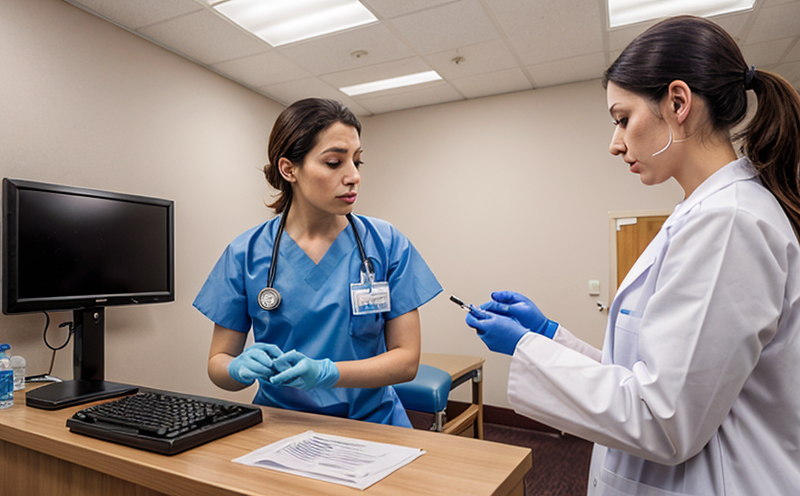Polyaromatic Hydrocarbon (PAH) Testing in Smoked Foods
The presence of Polyaromatic Hydrocarbons (PAHs) in smoked foods has been a subject of increasing concern due to their potential adverse health effects. PAHs are formed during the incomplete combustion of organic materials and can accumulate in various food items, particularly those that undergo prolonged smoking processes such as meat products, fish, and vegetables.
These compounds are known carcinogens and mutagens according to international standards like ISO 16532-4. The testing of PAHs in smoked foods is crucial for ensuring the safety of consumers and meeting regulatory requirements imposed by various countries worldwide. Our laboratory offers comprehensive PAH testing services tailored specifically for this sector, providing accurate and reliable results using state-of-the-art analytical techniques.
The methodology typically involves sample preparation which includes extraction of PAHs from the food matrix followed by chromatographic separation on high-performance liquid chromatography (HPLC) systems equipped with ultraviolet detection. The limit of quantification for most PAHs is set at 10 μg/kg, ensuring that even trace amounts are detected.
Our team employs rigorous quality control measures throughout the entire testing process to maintain strict accuracy and precision. This includes standard operating procedures (SOPs), calibration checks, and proficiency testing exercises conducted annually with external laboratories recognized globally for their expertise in this field.
In addition to routine analysis, we also offer custom solutions based on client-specific needs such as identifying specific PAH compounds of interest or developing bespoke protocols that align with unique project objectives. By leveraging advanced scientific knowledge combined with cutting-edge technology, our professionals strive to provide timely and actionable insights into the PAH content within smoked foods.
Regulatory compliance is paramount in today's competitive market environment. With stringent limits imposed by organizations such as the US FDA (Food and Drug Administration) and EU regulations, accurate testing plays a vital role in maintaining product integrity and safeguarding public health.
To sum up, PAH testing serves multiple purposes including ensuring food safety standards are met, protecting consumers from potential risks associated with these harmful substances, and facilitating adherence to international guidelines. Our laboratory is committed to delivering high-quality results that meet or exceed expectations while supporting ongoing research efforts aimed at understanding the impact of PAHs on human health.
Applied Standards
The testing of Polyaromatic Hydrocarbons (PAHs) in smoked foods adheres strictly to international standards such as ISO 16532-4, which provides detailed guidelines for the determination of PAHs in food. These standards ensure consistency and reliability across different laboratories performing similar analyses.
Additionally, our team follows additional protocols recommended by relevant governmental bodies like the US FDA (Food and Drug Administration) and EU regulations that dictate maximum permissible levels of various PAH compounds in specific categories of smoked foods. Compliance with these stringent guidelines is essential to prevent contamination and maintain product quality.
The methodology described earlier ensures adherence to these standards, including precise extraction methods, robust chromatographic techniques, and meticulous data interpretation processes. By doing so, we guarantee that every test conducted meets the highest industry benchmarks.
Industry Applications
Polyaromatic Hydrocarbon (PAH) testing in smoked foods finds application across various sectors including food manufacturing companies, retailers, and regulatory agencies responsible for enforcing safety measures. For manufacturers, understanding PAH levels helps them implement corrective actions if necessary, thereby maintaining customer trust and satisfaction.
For retailers, this information aids in making informed decisions regarding stock rotation and inventory management strategies aimed at minimizing risk exposure to harmful substances. Regulatory bodies use these results as part of their broader efforts towards enhancing overall public health outcomes by setting strict limits on acceptable PAH concentrations within the food supply chain.
Use Cases and Application Examples
One common scenario involves identifying sources of contamination in raw materials used during smoking processes. By analyzing samples at different stages of production, manufacturers can pinpoint areas requiring improvement or adjustment to avoid introducing unwanted PAHs into their final products.
Another example includes conducting periodic audits on suppliers who provide smoked ingredients to ensure they meet specified quality standards regarding PAH content. This proactive approach helps maintain consistency in product offerings across regions while complying with local regulatory frameworks.
Furthermore, some clients request specialized testing focusing on particular PAH compounds deemed most concerning due to their higher toxicity levels or more frequent detection rates. Such requests allow for targeted interventions aimed at reducing specific risks associated with certain types of smoked foods.





